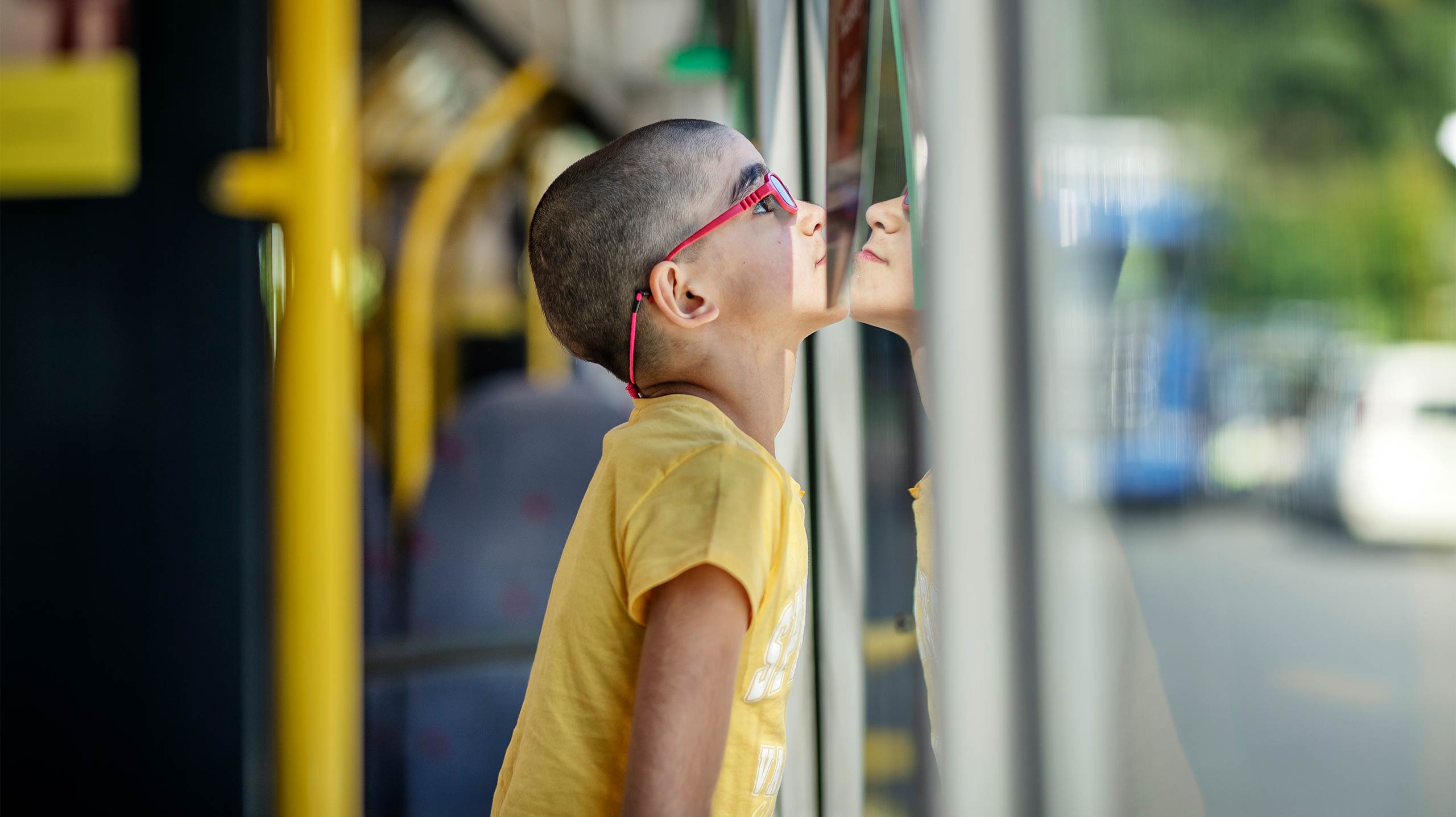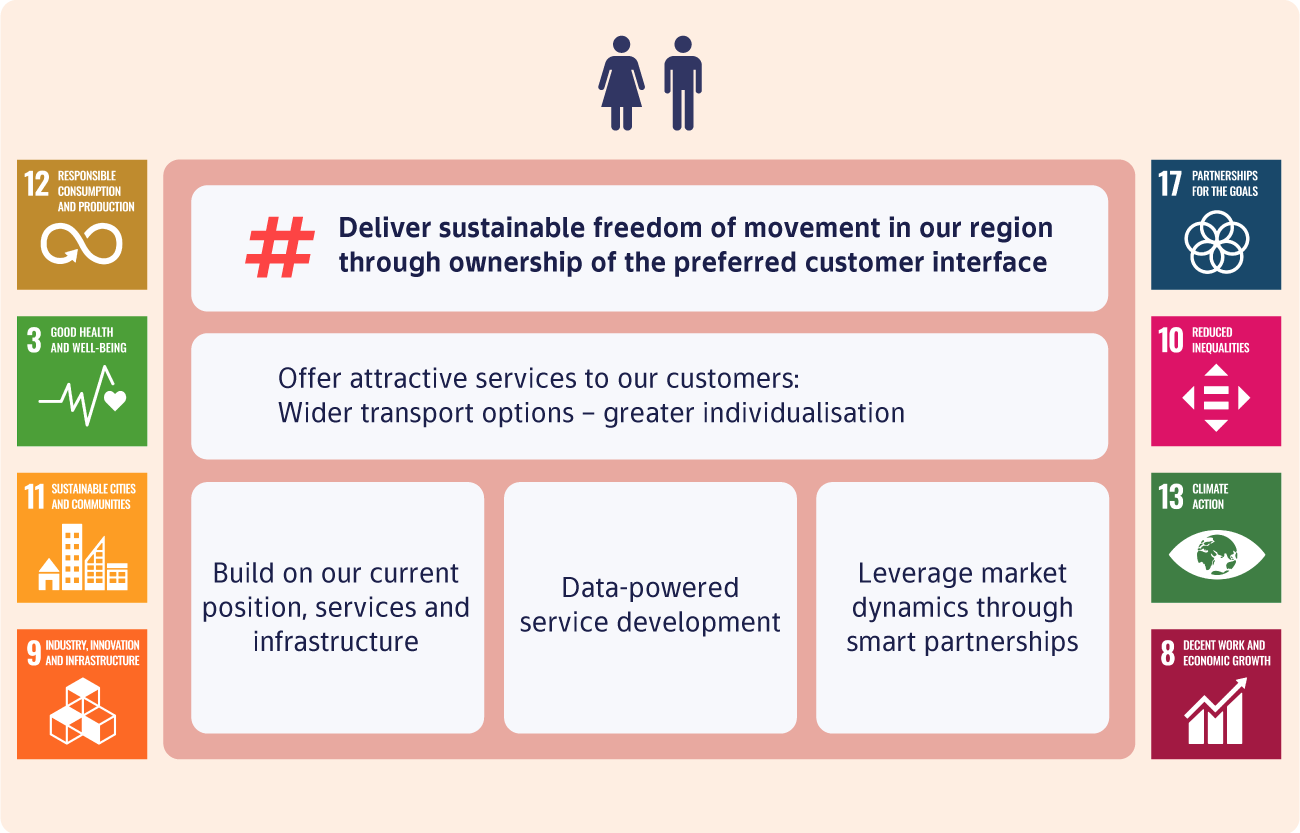
Sustainable Mobility
Ruter launched its new Sustainable Mobility strategy in the autumn of 2020. This strategy describes the most important development trends that affect our society and discusses their consequences for the transport sector, thereby trying to create a common framework for the opportunities and challenges we face. The question we must answer is, how can we make public transport in our region beneficial for our inhabitants and for the planet we live on?
A changing sector
The transport sector is facing significant changes driven by new technology, new business models, increasing customer expectations and a need for sustainable solutions. These developments offer enormous opportunities to reconcile the individual’s need for mobility with common goals for sustainable cities and communities. New solutions can be developed that are better for the inhabitants, more cost-effective and more space efficient. New tools and forms of communication can facilitate increased democratic governance. At the same time, the changes open the door for completely new operators who want to take positions in the mobility market, among them several of the world’s largest technology companies. The transport solutions offered by these operators will not necessarily be based on principles of sustainability and democratic participation, as the solutions for a publicly-owned company would be.
Ruter’s strategic direction
With the situation described above as a backdrop, in 2020 we launched a new strategic direction for our company; Our Vision for Sustainable Mobility. Our strategy explains why we believe Ruter (a company owned by the inhabitants themselves) should play a prominent role in the development of future transport systems.

Data is fuel
In the digital economy, data is the fuel. Access to data is crucial if we are to be competitive in the mobility market. The more we know about the population’s travel habits and preferences, the more attractive services we can develop for them. At the same time, the operators who own the preferred customer mobility interfaces will have the greatest opportunity to influence the travellers’ decisions and thus how the people in our region move. Good access to data via Ruter’s customer interface will be the main success factor if we are to remain attractive as a transport provider, and if we want to influence the transport sector in the desired direction.
Data and insight are important tools in the work of offering better services to our customers. In 2020, we have therefore worked to become even more data- and insight-driven.
We have installed sensor technology in our vehicles. More than half of the bus fleet is now equipped with a number of onboard sensors that stream data in real time about driving conditions, weather, delays and how many people get on and off. All of this goes into Ruter’s Digital Platform (RDP). Such sensors allow us to create even better customer services while we become better equipped to handle incidents that affect the journey.
For example, we always know where the buses are located and how many passengers are on board. This provides exciting opportunities. With this technology, we can make more precise estimates of arrival times and – in the long run – we will be able to predict whether we can expect passengers to get a seat on board.
We have also made it easier for our customers to contact us. In addition to our customer service center, we receive many enquiries via the new contact forms available online (www.ruter.no). Some enquiries are less time-critical, but a large proportion of the enquiries concern incidents that suddenly occur where customers need information and advice on how to reduce delays or other unforeseen consequences. Responding to these issues on time is resource-intensive if we want to help customers in specific situations, so throughout 2020 we have been developing solutions that use Artificial Intelligence and machine learning to improve these processes. These are among the services we expect to put into production in 2021.
If we want travellers to choose our customer interface, it must give them access to transportation services that are attractive and easy to use. If we are to be able to offer this, we must build on our existing position and infrastructure, and continue with data service development and utilise the mobility market’s innovative capacity through smart collaborations. Thus must all happen within the limits of what our planet can tolerate, illustrated by the UN’s Sustainable Development Goals as a framework.
Continuous strategy work
The launch of Ruter’s new Vision is not only concretised in a new strategic direction for our company; it also marks a change in our approach to strategic planning. With the environment around us in rapid development, it is no longer sufficient for Ruter to adopt a strategic plan every four years, as we have previously done. We find it increasingly more necessary to make strategic clarifications and assessments on an ongoing basis. In our continuous strategy work, our Vision must be a guiding star to lead the way. Concrete measures and activities must be assessed against the long-term strategic objective described in the Vision.
The launch of Ruter’s Vision was the topic of a dedicated breakfast meeting.
